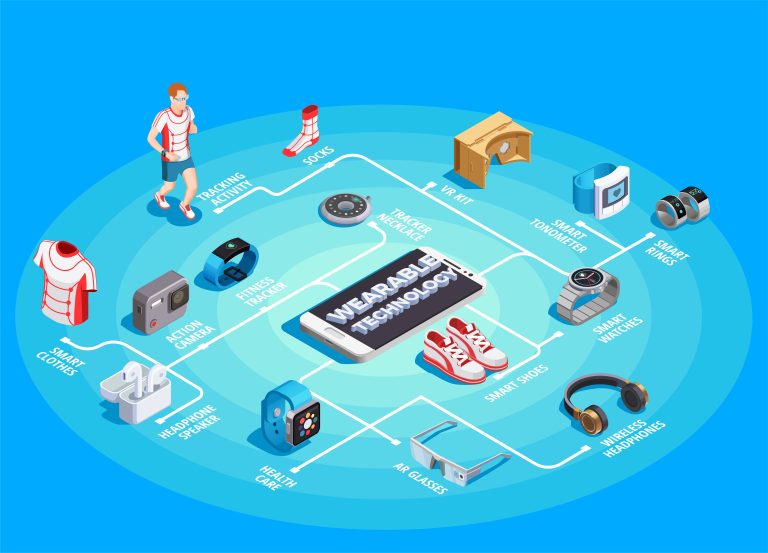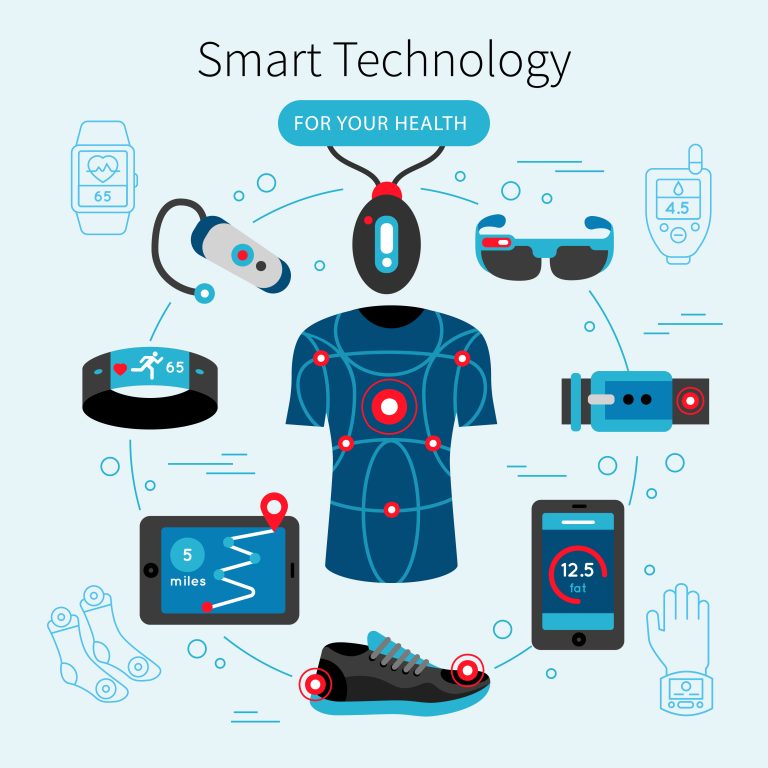Introduction:
In today’s fast-paced, tech-driven world, wearables have emerged as a fascinating and transformative trend. These compact and innovative devices, worn on the body, have seamlessly integrated technology into our daily lives, revolutionizing the way we communicate, monitor our health, and interact with the world around us. From smartwatches and fitness trackers to augmented reality glasses and smart clothing, wearables are reshaping industries and empowering individuals with information and connectivity like never before. In this blog post, we will explore the evolution of wearable technology and its profound impact on various aspects of our lives.
The Early Days: From Timekeeping to Basic Tracking:
Wearable technology has a rich history that dates back several decades. The first wave of wearables was primarily focused on timekeeping, with wristwatches being the most popular form. However, the true transformation began with the advent of fitness trackers, such as Fitbit, which introduced the concept of monitoring physical activity, sleep patterns, and heart rate. These early wearables laid the foundation for the health and wellness revolution that was yet to come.
The Rise of Smartwatches: From Notifications to Health Monitoring:
The introduction of smartwatches marked a significant leap forward in wearable technology. Combining the functionality of a traditional timepiece with the power of a smartphone, smartwatches brought a new level of connectivity to our wrists. Initially, they provided notifications for calls, messages, and calendar alerts, making it easier to stay connected on the go. Over time, smartwatches evolved to include health monitoring features such as heart rate tracking, step counting, and even electrocardiogram (ECG) capabilities. These devices became essential companions for fitness enthusiasts and individuals looking to lead healthier lifestyles.
Beyond the Wrist: Exploring New Horizons:
While smartwatches continue to dominate the wearable market, innovation has extended beyond the wrist. Augmented reality (AR) glasses, such as Google Glass and Microsoft HoloLens, have opened up new possibilities in fields like gaming, education, and industrial applications. AR glasses overlay digital information onto the real world, providing immersive experiences and enhancing productivity in various industries. Additionally, smart clothing embedded with sensors and conductive fibers has gained traction, enabling real-time monitoring of biometric data, posture correction, and even temperature regulation.
Healthcare Revolution: Empowering Individuals:
One of the most significant impacts of wearable technology has been in the healthcare sector. Wearable devices, equipped with sensors and advanced algorithms, have transformed the way we manage our health. Continuous glucose monitors help individuals with diabetes monitor their blood sugar levels, while smartwatches can detect irregular heart rhythms and potential heart conditions. Moreover, wearables are playing a vital role in telemedicine, enabling remote patient monitoring and facilitating early detection of health issues. These devices empower individuals by providing them with valuable health insights and promoting proactive healthcare management.
Challenges and Future Possibilities:
While wearables have come a long way, there are still challenges to address. Battery life, data privacy, and user experience remain key areas for improvement. However, the future of wearables looks promising. Technological advancements in flexible displays, miniaturization, and battery efficiency are paving the way for sleeker and more powerful devices. Furthermore, the integration of artificial intelligence (AI) and machine learning (ML) algorithms will enhance the capabilities of wearables, allowing for more accurate and personalized insights.
Conclusion:
Wearable technology has revolutionized the way we interact with the digital world and manage our health. From basic fitness tracking to sophisticated health monitoring, wearables have become an integral part of our lives. As technology continues to advance, wearables will likely become even more seamlessly integrated into our daily routines. They will empower us with personalized information, enhance productivity, and bridge the gap between the physical and digital realms. The future of wearables is an exciting one, promising a connected world where technology becomes an extension of ourselves.
Image by macrovector on Freepik


